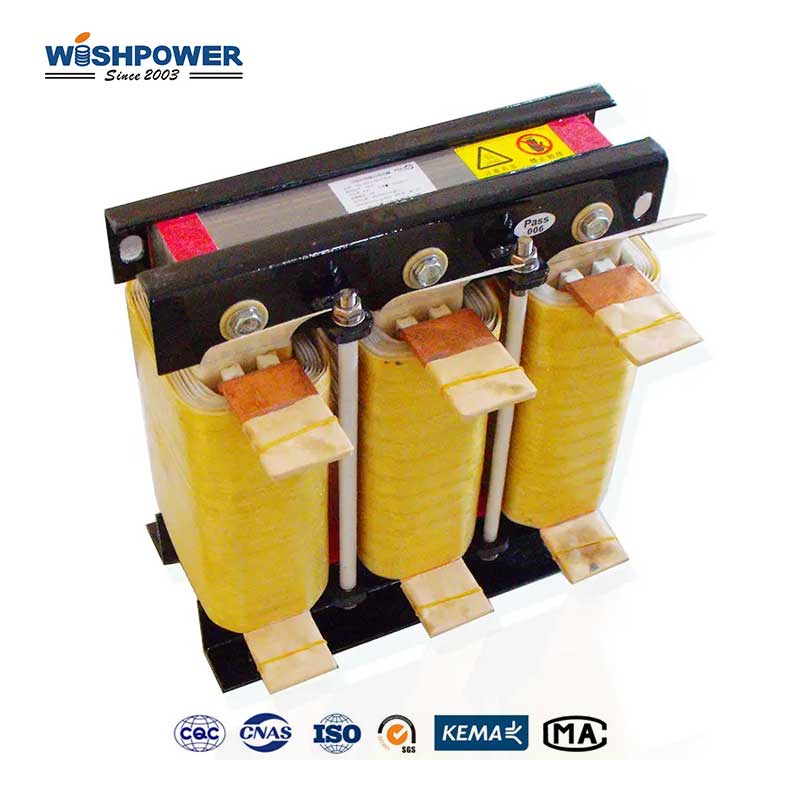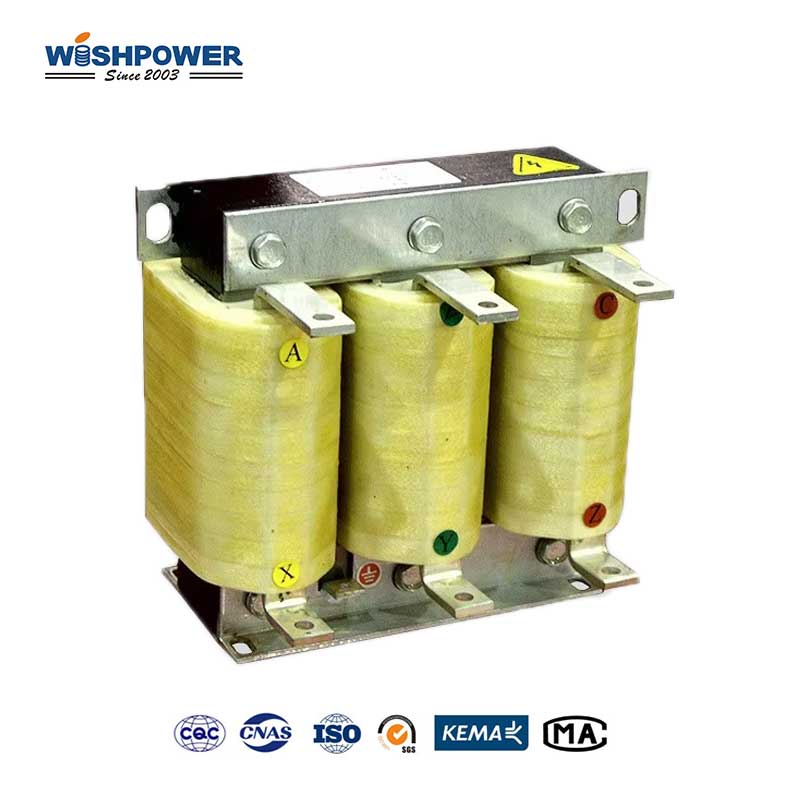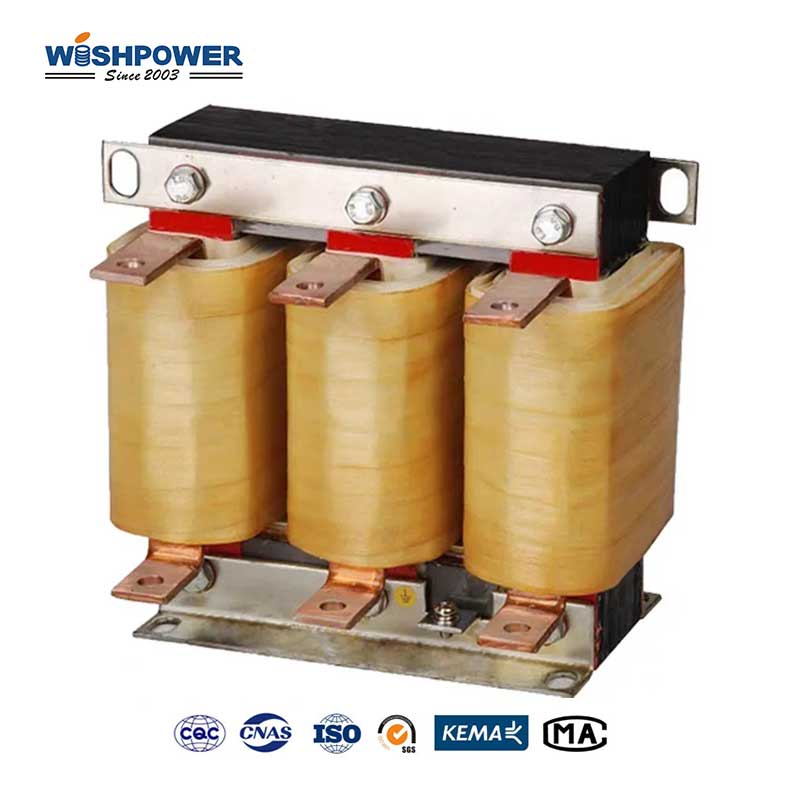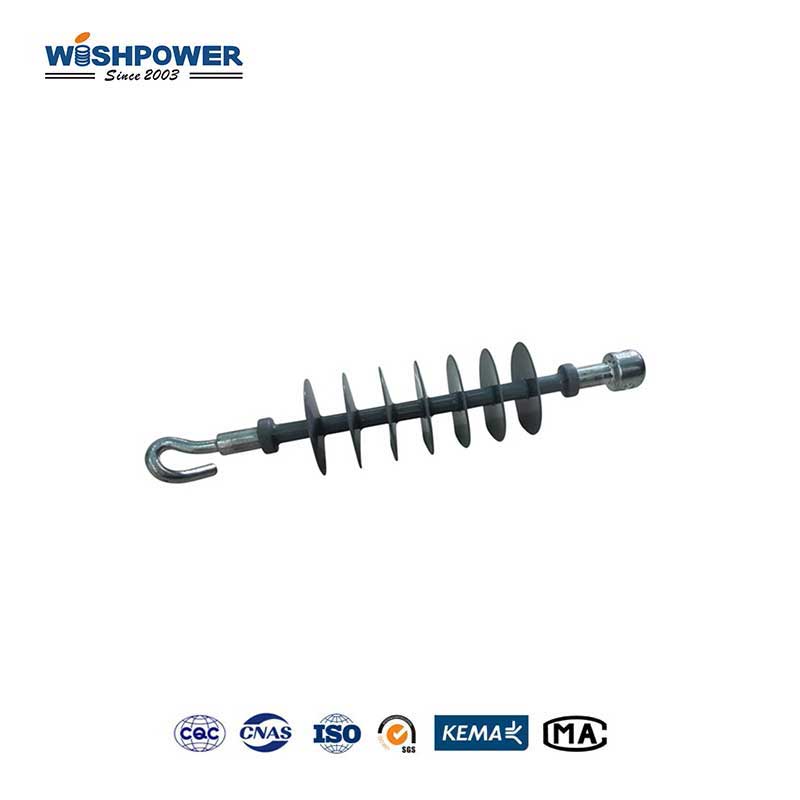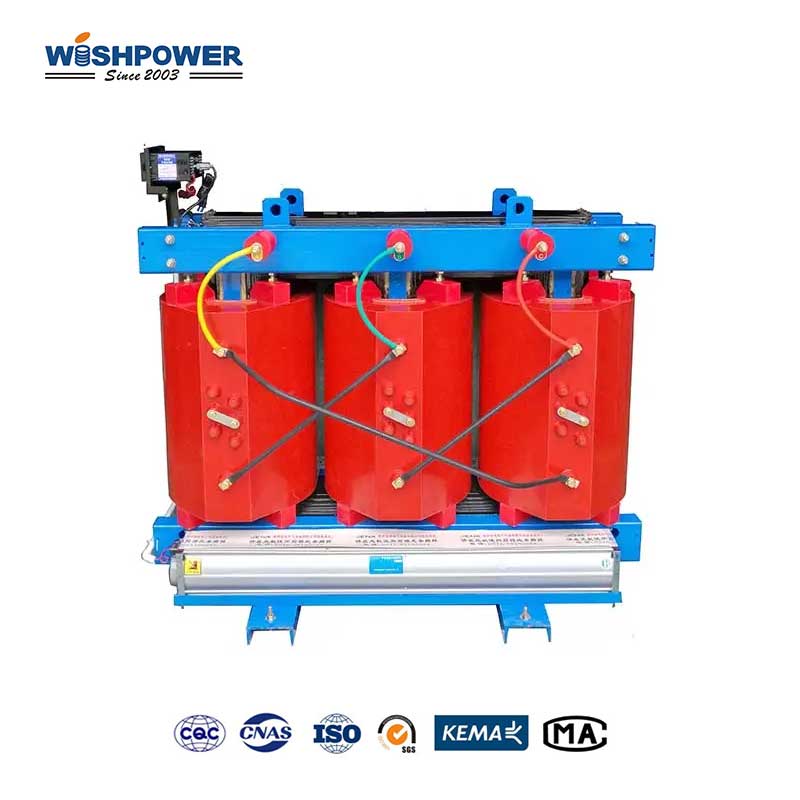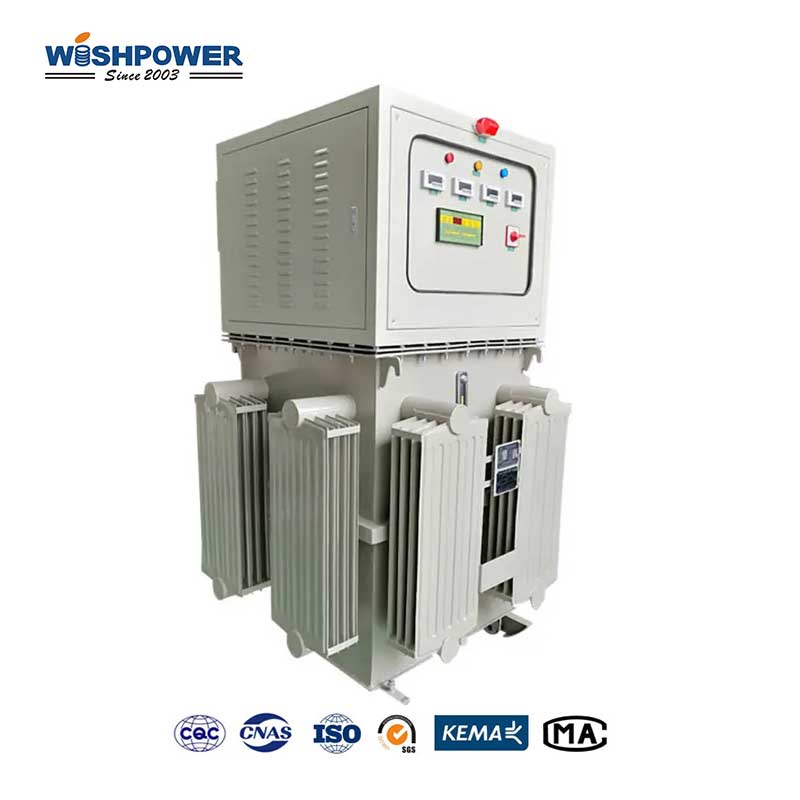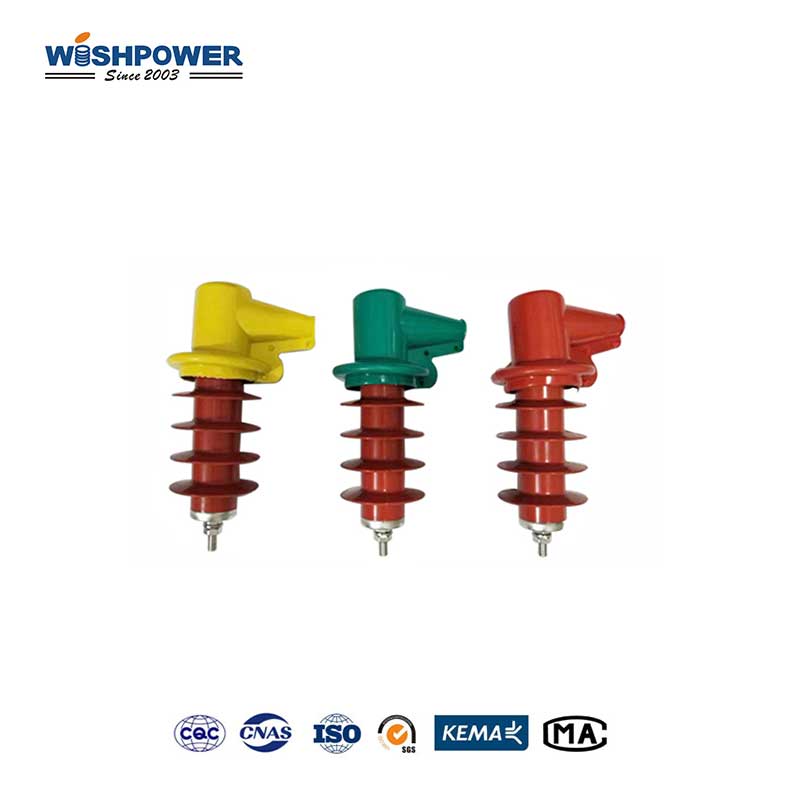Specification
| Power (KW) |
2.2 |
630 |
| (A)Rated Current |
5 |
1200 |
| Rated Inductance |
5.6 |
0.0233 |
| (Kg)Weight |
2.7 |
145.5 |
| (mm)Size |
W |
115 |
430 |
| D |
73 |
305 |
| H |
125 |
510 |
| W0 |
50 |
240 |
| D0 |
53 |
190 |
| A*B |
7*11 |
14*28 |
The table above is just one of our product parameters. If you want more information, please get in touch with info@wishpower.net
What is the Air Core Reactor?
The air core reactor is an electrical device that is used in power systems to provide inductive reactance without the magnetic core. Unlike iron core reactors, the self-inductance of winding generates the entire needed inductance. A core-free design eliminates the risk of core saturation and magnetic losses (eddy currents and hysteresis), making it very efficient for high-frequency and large current applications. They are extensively used for current limiting, harmonic filtering, and reactive power compensation in transmission as well as distribution networks. They offer linear performance of between 5 and 30 mA over a wide range of current loads and are stable in operation when subjected to changing electrical conditions. Because of the absence of a core, they have larger sizes than iron core reactors to yield the same value of inductance, but their uncomplicated design decreases losses, particularly in regimens with variable loads or high harmonic content. Because of the latter, they are often utilized in environments that require minimal losses and linearity in their operation; such as high voltage direct current (HVDC) systems, capacitor banks, and resonance prevention circuits.
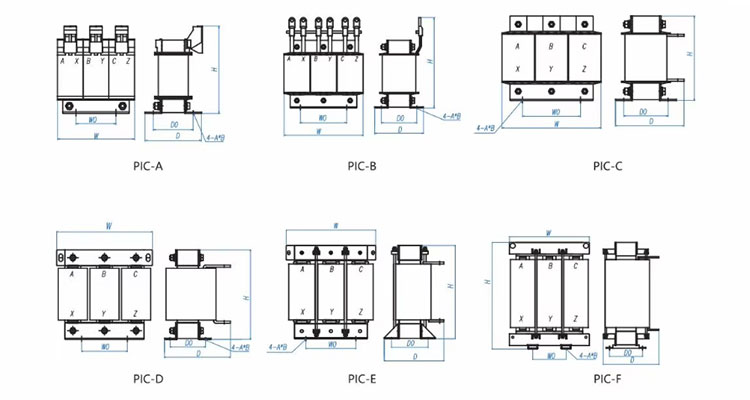
Market Trends
It is highly imaginable that the air core reactor market is growing rapidly due to the substantial demand for efficient power management and the prosperity of renewable energy sources. Now that the power grid is becoming more modern and complicated, there is an ever-increasing demand for reliable, low-loss components. However, these reactors are becoming important in systems with high voltages, and they are especially well suited for applications requiring little energy loss and stable performance under time-varying loads. Harmonic filtering and reactive power compensation applications in the industrial and commercial sectors are driving the market due to the increasing drive for energy efficiency and power quality improvements. However, its use will continue to increase as more countries adopt stringent energy regulations and standards, and become an increasingly important part of modern power infrastructure for improving system reliability and reducing transmission losses.
Benefits
- No Core Saturation
Air core reactors are free of magnetic core and this lessens the risk of core saturation with a stable and linear inductance even under high current.
- Reduced Energy Losses
Since they operate with no iron core, they have no magnetic losses such as eddy current and hysteresis, enabling higher power loss efficiency and lower heat generation in cases where low power losses and low heat generation are needed.
- Consistent Performance
However, they provide linear, consistent performance over a broad frequency, and current load range, and are trusted in systems with periodic, fluctuating electrical demands, such as harmonic filtering.
- Resistance to Overheating
The design of our reactors minimizes the generation of heat, thereby reducing risks of thermal problems and enabling their use in environments that need to operate for long periods under heavy electrical loads.
- High Durability
They are increasingly ideal for high voltage and high-frequency power systems where the life is medium to long to mitigate core degradation or magnetization issues and require less maintenance as time goes by.

Application
- Renewable Energy
Wind and solar power generation systems rely greatly on them. They help manage reactive power and stabilize voltage levels to enable the smooth integration of renewable power into electrical grids, such as is required for them to maintain power quality.
- High voltage Direct Current (HVDC) Systems
In HVDC networks they are employed for the control of current flow as well as reduction of the harmonic distortion. On HVDC projects, for which long-distance power transmission is now common, their ability to operate efficiently at high frequencies is essential.
- Smart Grids
As smart grid technology advances, air core reactors are used as power conditioning hardware to maintain stable voltage and current levels within the grid. Distributed energy resources, and overall grid reliability, are managed with their help.
- Railway Electrification
In electrified rail systems, they are used to control the flow of current and protect electrical components from short circuits and overload. They are robust enough and have enough resistance to overheating that they are well suited to the high power demands of rail networks.
- Capacitor Bank Protection
In industries that use sizable capacitor banks, like industrial manufacturing plants, as a rule, air-core reactors are employed. The safety and longevity of electrical systems are improved through inrush current filtering and protection of capacitors during switching operations.
Certificate

Factory

Hot Tags: Air Core Reactor, Reactor, Thailand, manufacturers, ISO factory, wholesale, KEMA, high quantity, best, price, low to high voltage






